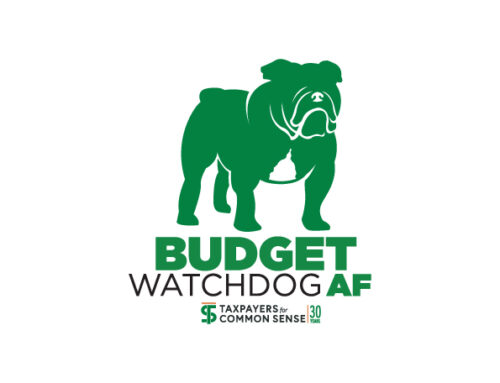When Congress returns next week from its Easter break, it’s likely to receive a gift of sorts from the White House. But instead of a basket of treats, the administration is preparing to submit a legislative package of spending rescissions. Wherever you fall on the appropriateness of the cuts, a formal rescission request would mark a return to regular order in an otherwise chaotic cost-cutting first quarter of 2025. More importantly, it showcases the need for Congress to reclaim its primacy in spending decisions if we’re ever going to seriously tackle our nation’s mounting debt.
Reports indicate lawmakers returning to Washington will be greeted with a formal White House request seeking rescission of about $9 billion in funding. Many of the targets—such as NPR, PBS, various programs at the State Department—have already been battered by U.S. DOGE Service or other cuts. But a formal rescissions request would be different. It would trigger a process where Congress would be asked to act and, whether the cuts are endorsed or rejected, would be more likely to survive any legal challenges.
The rescission process dates back to 1974, when Congress passed the Congressional Budget and Impoundment Control Act in response to concerns about too much spending power in the Executive Branch. Specifically, President Nixon had refused to obligate $12 billion appropriated by Congress, instead “impounding” those funds. To prevent a repeat, Sec. 1012 of the law created a process allowing the administration to temporarily impound funds while Congress formally considers the request.
A formal rescission request gives Congress the chance to re-engage in the spending process during the current fiscal year. The request can’t touch mandatory spending (Social Security, Medicare, farm subsidies, etc.)—it’s limited to discretionary funds already appropriated. After the formal message is submitted to Congress, the clock starts. Congress can take up the package and vote on it; if no action is taken within 45 days, the rescission request fails and the administration must spend the funds. However, if the spending committees don’t act within 25 days, a discharge petition can force the package to the floor with a simple majority. Once under consideration, debate is limited, amendments must be germane, and passage requires only a simple majority in both chambers.
The administration’s submission of a rescissions package is an opportunity for lawmakers to formalize (or not) some of the DOGE cuts. Creating a legislative record makes any outcome more likely to withstand legal challenges. More importantly, it provides a venue for public debate. The spending cuts will be in legislative language, open to public scrutiny, and debated on the floors of the House and Senate. It’s a chance for Congress to go on record.
That said, rescission packages have a mixed record. Sometimes they ask the same Congress that approved the funding to turn around and rescind it. In other cases, lawmakers simply look the other way and the package dies. Or it can get voted down outright, like a $15 billion package that failed during President Trump’s first term.
And here’s another point—if Congress rejects the rescissions package, the administration must go ahead and spend the funds. Congress will have twice approved the funding, DOGE or no DOGE. This is how funding cuts contemplated by DOGE should have been done from the start—evidently Elon Musk was unaware of this process until Senate Republicans explained it to him. Further proof DOGE should have brought budget watchdogs like TCS into the fold instead of going it alone.
Taxpayers for Common Sense has long supported reforms to improve the administrative rescissions process—specifically, creating an enhanced rescission process that wouldn’t be ruled unconstitutional like the line-item veto. Under enhanced rescission authority, the President could present one package per spending bill shortly after enactment. The House would be required to vote on it, and if passed, the Senate would then have to consider it. Lawmakers could object to specific provisions, striking them if successful, but the process would continue for the rest of the package.
But enhanced rescission authority is just one tool. We need an entire toolbox to truly get our debt under control. There are many process reforms that could improve our nation’s spending decisions: switching to biennial budgeting (setting budgets for two years instead of one); eliminating gimmicks like directed scorekeeping, where Congress dictates cost estimates rather than using the nonpartisan Congressional Budget Office’s; ending the practice of parochial tax expenditures that are “temporarily” extended every year or two, masking their true cost; raising revenue, writ large; and applying more realistic inflation-adjustments and means tests in social safety net programs.
Ultimately, we need Congress to commit not just to better processes, but to better principles. Even if enacted, a rescissions package is limited to unspent discretionary funds. A partisan package is unlikely to succeed—or could simply be reversed by a future Congress. Debt and deficits are bipartisan problems requiring bipartisan solutions. Enhanced rescission authority can be an effective tool to readjust spending to changed circumstances, but it must be wielded by a Congress and administration committed to fiscal responsibility. And it’s only one of many reforms needed to truly get deficits under control. Congress must make the tough decisions.
- Photo by Alejandro Barba on Unsplash











Get Social